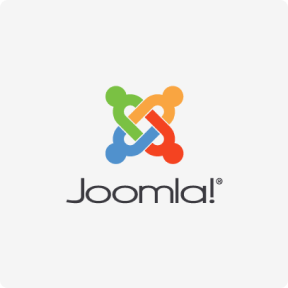Atlassian’s new Bitbucket Server integration for Jenkins
June 8, 2022
Software development
Installing suggested plugins or selecting specific plugins for Jenkins
As a beginner, you can go with the ‘Install suggested plugins’ option. But if you know which plugins are required by you, then you can go with the ‘Select plugins to install’ option. Add create your super simple pipeline that builds the branch or just print the hello world message.
Jenkins will use the plugins to integrate with other software as shown in the image below. After finding the official Jenkins Helm Chart on ArtifactHub, you need to add the Jenkins chart repository on your local machine. MuleSoft vs ZigiOps – see the integration platforms comparison, their pros and cons and how to choose the best integration tool. With ZigiOps, the Zendesk Jira integration happens seamlessly. Sync workflows, prevent bottlenecks, and resolve customer issues faster. With the help of Jenkins, organizations can significantly speed up software development, as it allows high levels of automation.
CodeScene
Codeac helps you guard all the critical metrics to give you actionable feedback and insight about the current state of your codebase. This will help you keep track of your code quality over time. Scan https://www.globalcloudteam.com/ your Salesforce applications for security and technical best practices with extensive, automated checks curated by experts. Track and monitor projects and repositories with visualized statistics.
- Waldo reads git history and merge history from Bitbucket.
- You have successfully set up Jenkins CI/CD on Kubernetes using Helm.
- Please refer to this if you don’t have Jenkins installed on your machine.
- As a prerequisite to following the various steps suggested in this article, you would need a public server for installing Jenkins.
- Get contextual information about your repositories and take action without leaving Slack.
You can see the current status of the Jenkins service using the systemctl status jenkins command. We want to automate project build using a Parametrised Jenkins Pipeline of the source code stored in Bitbucket Server. Drop us a line and tell us how you’re using Webhook to Jenkins and what features you’d like us to add next.
WakaTime: Time tracking and code metrics
With the ZigiOps’ enhanced capabilities, you can filter by different statuses and transfer only failed or successful builds, for example. You can extract all types of Jenkins fields and with the extended mapping features set exactly how you want them to be transferred in your Bitbucket issues. Analyse your repositories on SonarCloud and use this application to display code quality results inside pull requests or in a repository widget.

Jenkins is used to build and test your software projects continuously, making it easier for developers to incorporate changes to the project and for users to leverage a fresh build. It also enables you to deliver software on a continuous basis by integrating with a wide range of testing and deployment technologies. Jenkins is an Open-Source Continuous Integration (CI) tool that is extensively used by developers to automate the testing and deployment of their applications. BitBucket is a popular Source Code Management tool for version control that allows developers to collaborate with each other from all over the world. Once you’ve added a Bitbucket Server instance to Jenkins users will be able to select it when creating a job, which will make it easier for them to select the repo to be cloned.
Connect Webhooks to Firebolt: 2 Ways to Integrate Data
Jenkins is an open-source multi-platform software for continuous integration/continuous delivery and deployment (CI/CD) in DevOps. Jenkins uses CI/CD pipelines to automate the software development and deployment workflows. Jenkins uses plugins to integrate with DevOps tools such as Docker and Kubernetes. Get contextual information about your repositories and take action without leaving Slack.

Easily sync your projects with Travis CI and test your code in minutes. Light-weight issue tracking and agile boards for your Bitbucket projects. Percy integrates with your stack and workflow to give you visual insight into every product change. With Percy’s visual testing and review platform, it’s easy to automate manual QA, catch visual bugs, and deploy with confidence. Integrate Bitbucket with Opsgenie to track your code changes during an incident. Investigate the potential causes with better insights for a quicker remediation process.
ScatterSpoke Metrics for Bitbucket
Everyone who’s reviewing the PR can join the meeting from the link in the comment. This article gives an overview of Jenkins, Bitbucket and Jira. It also includes tutorials on how to install Jenkins and integrate it with Bitbucket and Jira. Click the test connection to see if it triggers the message.
Jenkins has more than 147,000 active installations and over 1 million users around the world. It is an open-source tool written in Java and widely used by developers. Waldo needs to have the proper branch information from your CI to properly tag each build uploaded. Waldo reads git history and merge history from Bitbucket. Continuous integration and continuous delivery for Bitbucket Cloud.
Bitbucket, but better
Add links and content panels to Bitbucket without writing add-ons. Low-code rules for assigning code review and providing next steps from open to merged. “Auto unapprove” and “retain needs-work” code reviews, too. Visualize your commits when using the Git Flow branching strategy. Cisco Webex Meetings helps you resolve Pull Requests quickly. Start or Schedule a Webex Personal Room meeting directly from your PR.

Explore the possibility to hire a dedicated R&D team that helps your company to scale product development. A team of the best professionals helps find the best options for each personalized project of the client and answers the most popular questions. Now that we have configured and started our Kubernetes Cluster (Minikube), bitbucket jenkins integration let’s install Helm. There are different ways of installing Helm on your specific operating system. In this tutorial I will show you how to install Helm on Linux, macOS, and Windows. Embrace a holistic data approach through integration – see what is a holistic approach to data and how integration can help.
Ways for Enabling Jenkins with Bitbucket:
It also shows you how to search for the Official Jenkins Helm Chart. You need to create a first Jenkins Admin user who will have control over the Jenkins platform. The Admin user will perform all actions/tasks in the Jenkins platform like starting CI/CD pipelines and managing Jenkins. You will search the official Jenkins Helm chart on ArtifactHub. ArtifactHub is a web-based application that enables finding, installing, and publishing Helm charts. A Helm chart contains all the Kubernetes YAML files for deploying a Kubernetes application.





